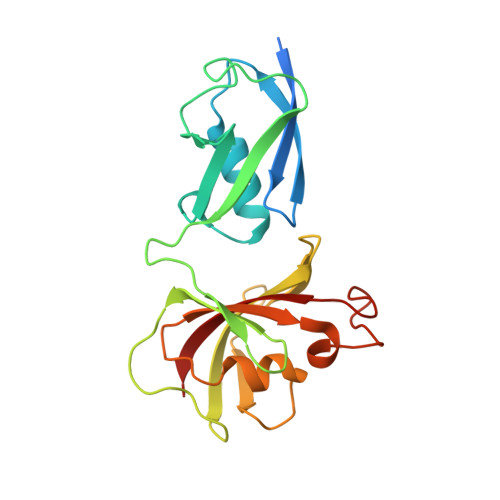A structural biology approach enables the development of antimicrobials targeting bacterial immunophilins.
Begley, D.W., Fox, D., Jenner, D., Juli, C., Pierce, P.G., Abendroth, J., Muruthi, M., Safford, K., Anderson, V., Atkins, K., Barnes, S.R., Moen, S.O., Raymond, A.C., Stacy, R., Myler, P.J., Staker, B.L., Harmer, N.J., Norville, I.H., Holzgrabe, U., Sarkar-Tyson, M., Edwards, T.E., Lorimer, D.D.(2014) Antimicrob Agents Chemother 58: 1458-1467
- PubMed: 24366729
- DOI: https://doi.org/10.1128/AAC.01875-13
- Primary Citation of Related Structures:
3UF8, 3UQA, 3UQB, 3VAW, 4DZ2, 4DZ3, 4FN2, 4G50, 4GGQ, 4GIV - PubMed Abstract:
Macrophage infectivity potentiators (Mips) are immunophilin proteins and essential virulence factors for a range of pathogenic organisms. We applied a structural biology approach to characterize a Mip from Burkholderia pseudomallei (BpML1), the causative agent of melioidosis. Crystal structure and nuclear magnetic resonance analyses of BpML1 in complex with known macrocyclics and other derivatives led to the identification of a key chemical scaffold. This scaffold possesses inhibitory potency for BpML1 without the immunosuppressive components of related macrocyclic agents. Biophysical characterization of a compound series with this scaffold allowed binding site specificity in solution and potency determinations for rank ordering the set. The best compounds in this series possessed a low-micromolar affinity for BpML1, bound at the site of enzymatic activity, and inhibited a panel of homologous Mip proteins from other pathogenic bacteria, without demonstrating toxicity in human macrophages. Importantly, the in vitro activity of BpML1 was reduced by these compounds, leading to decreased macrophage infectivity and intracellular growth of Burkholderia pseudomallei. These compounds offer the potential for activity against a new class of antimicrobial targets and present the utility of a structure-based approach for novel antimicrobial drug discovery.
- Emerald Bio, Bainbridge Island, Washington, USA.
Organizational Affiliation:

















